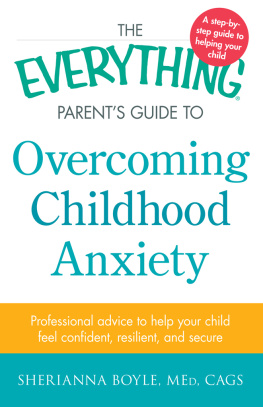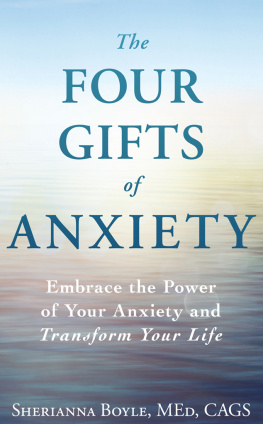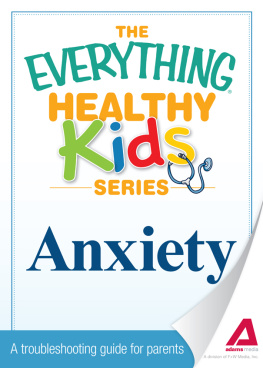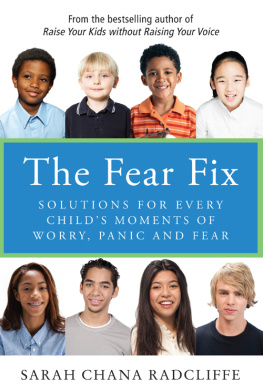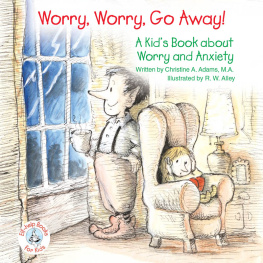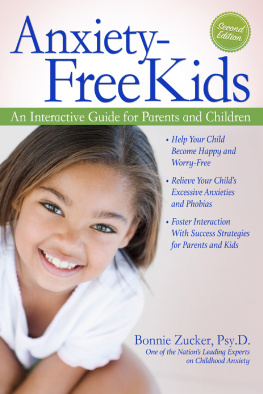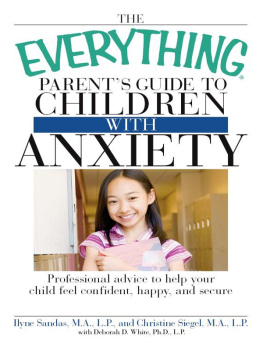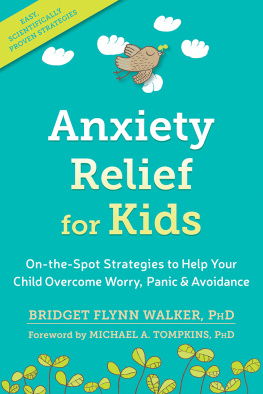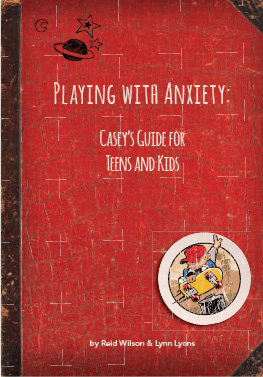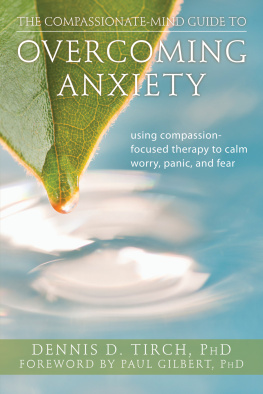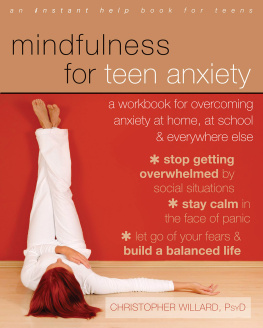
OVERCOMING
CHILDHOOD
ANXIETY
Professional advice to help your child feel confident, resilient, and secure
Sherianna Boyle, MEd, CAGS

Avon, Massachusetts
Anxiety (ng-z--t) n. . A treatable, uncomfortable state of mind, often described as an overwhelming feeling of apprehension, worry, and/or fear, marked by physical symptoms such as heart palpitation, nausea, tension, physical pain, trembling, sweating, and psychological symptoms that include self-doubt and inability to cope.
Contents
Introduction
What we have learned about the brain has dramatically changed over the past five years. New scientific research has substantiated how vast, viable, and intricately connected our brains are. Yes, anxiety disorders are on the rise, but so are the reliable and sound strategies proven to alleviate it. In fact, research shows consciously choosing to work through anxiety offers much more than relief; it also activates strength, resiliency, and personal fulfillment.
The Everything Parents Guide to Overcoming Childhood Anxiety recognizes the uniqueness of each child and family by providing you with an array of tools, strategies, and resources. Each one has been backed up by valid research and evidence. Whether you are concerned about your childs anxiety or feeling anxious yourself, you can benefit from the advice in this book.
The lessons in this book cover treatment for a child who may fit the standard criteria for an anxiety disorder, as well as strategies for children and parents who may not. Many of the strategies are free of cost, easily implemented by parents and taught to children. Others require connecting with credentialed professionals who may deliver a service or prescribe treatment. Discipline and simple steps for updating your parenting skills to incorporate current scientific viewpoints are sprinkled throughout the book. Old forms of thinking can be replaced by fresh mindsets that support the integration of the subconscious and conscious mind.
In the end, anxiety will no longer be something you or your child needs to beat, but rather an opportunity to strengthen who you are. Consider this book to be a doorway to revealing the true nature of you and your child. Enjoy.
CHAPTER 1
What, Me Worry?
Kids today have to keep pace with a faster lifestyle than any other past generation. They are faced with greater academic expectations and responsibility, have additional pressures due to changing family structures, and look forward to an uncertain worldview economically and politically. In short, growing up is probably very different from how you remember it, and, for some, a lot more worrisome. New science however, confirms a promising viewpoint illustrating how thoughts, beliefs, feelings, and pressures are a reflection of neurological pathways and habits. Similar to optimizing a computer, you can change the brains programming and patterns and how it chooses to register present experiences like anxiety. The process begins with a simple shift from wanting to know what is happening to your child to becoming curious about how this may be happening for him.
Whats Happening for My Child?
Anxiety has a unique way of serving both you and your child. Your child will have an opportunity to learn about the magnificence of his brain, body, and feelings. He will learn how thoughts manifest into words, self-talk, and in some cases belief systems. He will also learn the difference between suffering and feeling.
It is through feeling that he will connect to the deeper parts of himself and because you are along for the ride, you get to join him in discovering your inner values, how you interpret the world, what triggers uncomfortable feelings for you, and your unconscious and conscious fears and desires. With your guidance, rather than becoming overwhelmed by his symptoms, your child will learn how to appreciate them, and, with practice use them to make healthier choices. The process of overcoming anxiety takes your child along a journey of creating healthy boundaries, developing resiliency, self-discipline, creativity, autonomy, and most of all self-love. As her parent, you are an important guide and supporter.

Ninety percent of children and adults successfully decrease their anxiety through lifestyle changes that foster empowerment, confidence, and independence. This can be achieved through a combination of mindfulness training, complementary therapies, psychotherapy, alternative medicine, and, when necessary, medication.
How to Recognize Anxiety
Adults experiencing anxiety feel nervous, jittery, uneasy, moody, and worried. You may not sleep well, and others might see you as agitated, irritable, or distractible. Children and teens can experience anxiety in much the same way. Younger children often do not have the words to let you know what is going on for them, and teens get confused about how to balance what they know logically in their heads with the emotions they are feeling. As a result, the anxiety creeps into their behavior, and shows itself in both overt and covert ways. Covert anxiety may show itself while your child is studying for a test, if he keeps biting his nails until they bleed. You see the damage, but do not know why it has occurred. Or your child complains that she has a stomachache, which (unbeknown to you) disappears after a school test is over. Overt anxiety is more pronounced; for example, before going to dance class your child has a meltdown when you ask him to put his dance gear in his bag. During the yelling, you hear things like I cant go to class tomorrow, I wont have enough time to study tonight, or, Stop getting on me about everything, Im only one person, how much can I take?

Studies show children typically worry about school and personal safety. A childs developmental age also seems to influence worries. For example, adolescents with more abstract thinking abilities tend to worry more about worldly events. Younger children (preschool and elementary) may be more concerned about friendships.
While every child occasionally feels stressed, worried, or fearful, an anxiety disorder is diagnosed when your child feels excessively, unreasonably, persistently, and often uncontrollably worried. This worry will take over the childs thoughts, sometimes lasting for an extended period, and the hardest part for her is that she will feel like she cant make it stop. You can sit down and discuss your childs fears with her, showing her they are not warranted, but she still cannot seem to make the worry and apprehension go away. If the distress your child feels extends to all areas of life including home, school, and with friends, then it is no longer normal or expected anxiety. Specific areas of concern occur when anxiety affects school attendance, academic motivation, learning, concentration, memory, friendships, activity level, or sleep patterns.

